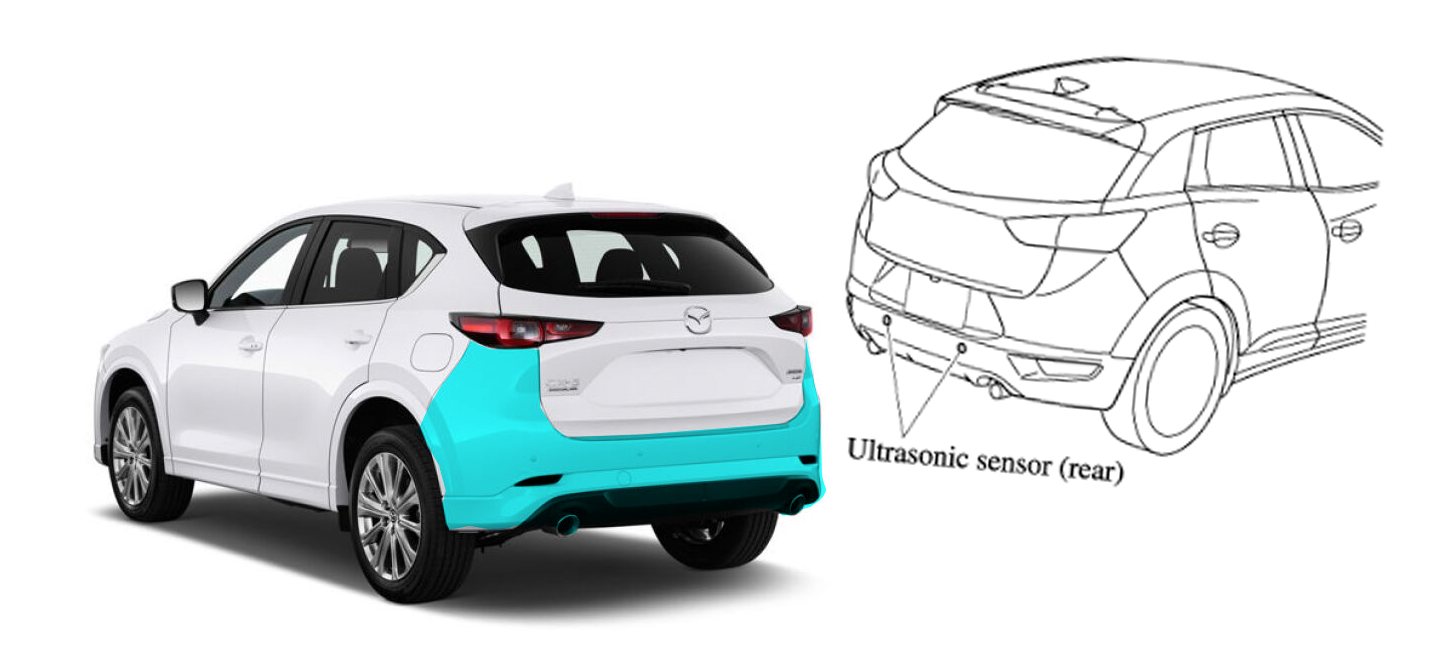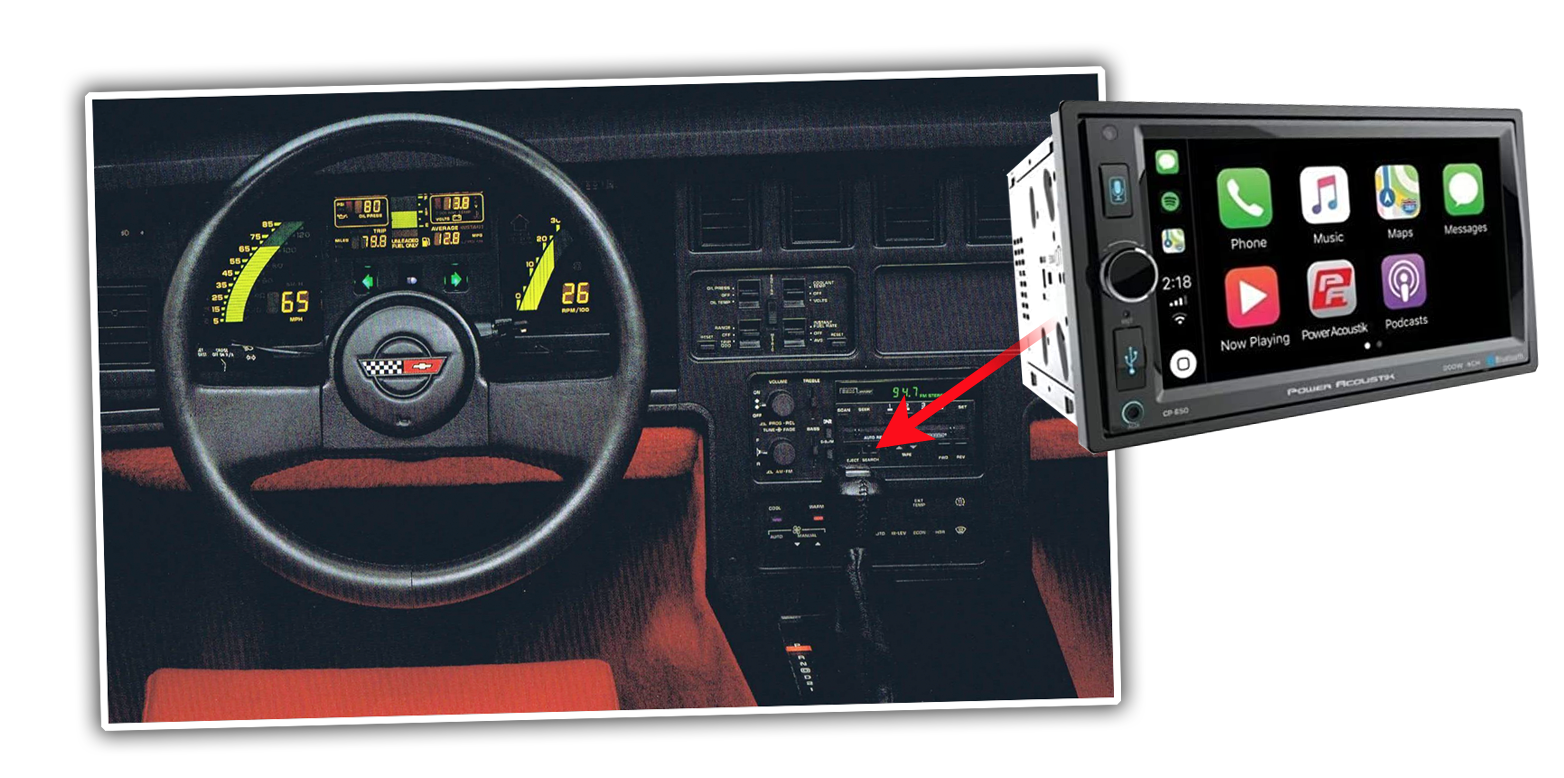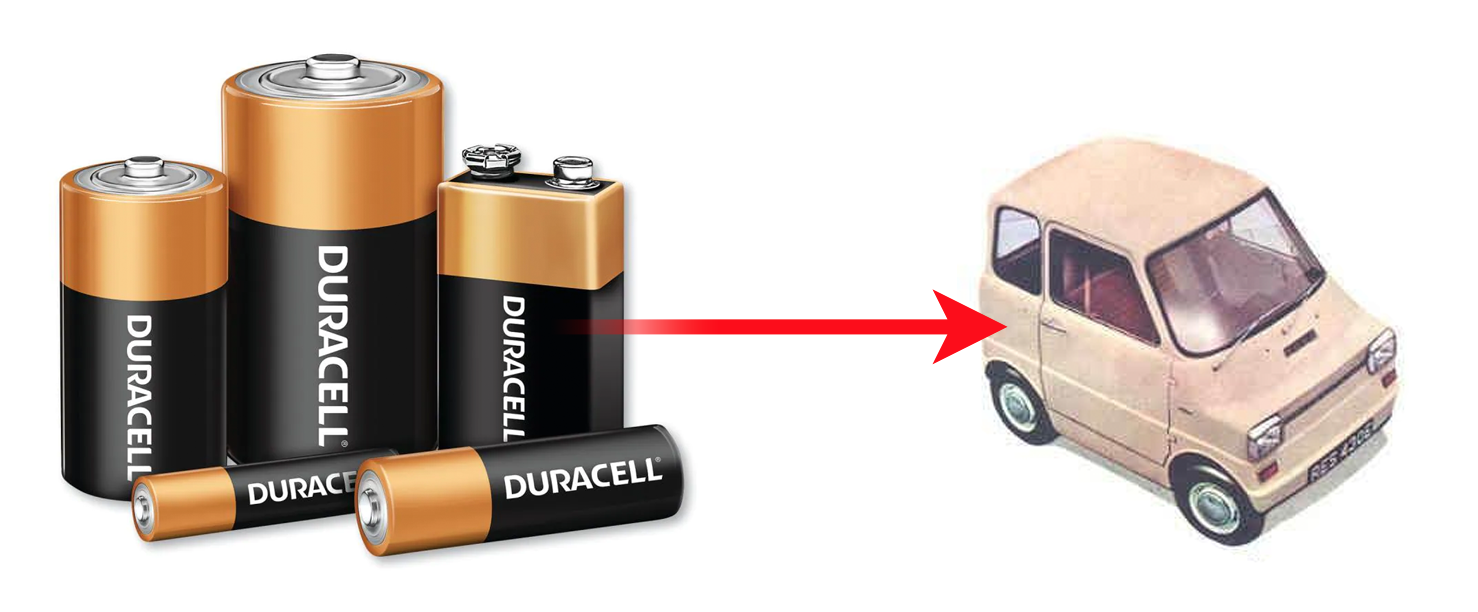These are real, significant problems, though, and they’re the sorts of things that affect how your quality of life with your car is, and, remember, that’s a relationship that will last, at least on average in America, over 12 years. Europe is about the same, and while Japan and China are a bit less, plenty of the world is older. Cars are more expensive than ever, and they last longer than ever, too (On average, apparently. Though many old cars were built like tanks, I realize). Most of us will have our cars a long while, or be buying used cars that have been around a long while. And as you live with your car and pay to keep it maintained, dealing with wear and damage and all of the encroaching entropy of physical reality, some pretty significant issues become apparent. Here’s the five biggest ones, at least to me:
1. Trash Management
This may sound trivial, but I’ve been in enough people’s cars to know that dealing with the near-constant trickle of refuse and detritus created by life is a struggle, and affects people’s quality of life and their relationships with their. The simple fact is that no car on the market today has any sort of really well-thought-out plan for dealing with trash, and that’s ridiculous. This is an issue I’ve discussed before, and I probably will keep bringing up, because as far as I can tell, nobody else really is. I get why – what could be less sexy than figuring out how to best integrate an easy-to-empty trash can setup in a car? People’s cars get full of trash, and there’s no good place to put it. Little aftermarket trash can doohickies exist, but they’re almost always awkward things that hang on seat backs or fit in cupholders and look like cheap garbage. Something good and well-integrated is needed. If people are shopping between two otherwise indistinguishable crossovers and one has a well-designed way to deal with regular, everyday trash, that one will win. Trust me. [Editor’s Note: Let’s not forget that much of that trash ends up between the center console and and seat — a gap that everyone hates and whose reign of terror automakers have allowed to continue on. -DT]
2. Forgiving Design
This one I think is actually really important, and is more of a philosophical shift in how we design and build cars as opposed to any one specific thing. In general, it just means that your car should be a machine that is tolerant of you, the user. It should be a machine that can absorb a certain degree of punishment without becoming too impaired. This implies a design philosophy that absorbs and deals with normal wear, tear, and damage in elegant ways, which modern car design very much does not do. Take bumpers, for example. Modern cars have huge, plastic, painted bumper covers like this:
These bumper covers can house any number of ultrasonic (and other) sensors and lights and other expensive equipment. Because they’re painted, any minor damage looks like crap on them, and because of the electronic equipment they house, they’re incredibly expensive to fix. A bumper on a common car like a Toyota RAV4 can cost between $885 and $1389, for example. Other sources suggest that bumper replacement can range from $500 to $2,000, and include this maddening paragraph: The fuck? More cost-efficient to buy a new car because of bumper damage? That’s madness. The whole point of a bumper is to take damage. It’s called a bumper. The same thing goes for wheel design–its way too easy to curb-damage a wheel, and those are expensive to replace. Also, components like headlights which are on the corners of cars, are vulnerable in small wrecks, and have sadly become quite expensive; here’s a $1,700 Volvo headlight, for example. Car design should, ideally, consider the whole life of the car, and that design should accept the reality of wear and damage and be designed to handle it well.
3. DIY Serviceability
Related to forgiving design of a car is the idea that it should be designed in such a way to allow the owner to easily carry out basic maintenance using simple tools. Ideally, filters and other consumable parts would be located for easy access and replacement. Under-hood packaging could give more consideration to owner access to parts that are likely to need replacement. There’s smart engineers in the world; if it werw a priority, couldn’t even things like timing belts be made owner-accessible? Of course, this would mean other compromises for packaging and possibly styling It might make cars less sleek when new, even if they’d be much more likely to be properly maintained as they age. Of course, dealers want the revenue from service, and carmakers want you to buy new cars, not keep your old ones going forever, so I have very little hope any carmaker will make DIY serviceability a priority. [Editor’s Note: At Chrysler, there is a team whose job is to make sure that cars are engineered in a way that’s serviceable. This is important, because it affects cost of maintenance even if the owner takes their car to a shop. And that plays a big role in owner satisfaction. -DT]
4. Standards And Upgradability For UX And Electronics
Not too long ago, almost all cars followed a standard for their infotainment systems, like the Double-DIN standard, also known as ISO 7736, adopted in 1984. For a long time, nearly every major automaker was building cars with infotainment systems that met this standard, which means you can take a car that’s 20 years old and upgrade it to have the absolute latest automotive electronics like Bluetooth and Apple CarPlay and a rear-view camera for about $130, incredibly easily, by just sliding a new unit into the dash. That’s objectively great for a longterm car-owner: a huge upgrade in the car’s UX and features for minimal money and effort. And almost no modern car you buy today is capable of this. That huge, portrait-oriented display screen on your Mach-e or your big Tesla center screen sure looks great now, but what about 10 years from now when the tech is woefully outdated? There’s no guarantee the computing hardware in your car will be able to handle features and systems a decade from now–in fact, we’ve already seen carmakers require expensive hardware upgrades in older (though not that old) cars to use new features. Current cars do not use any cross-platform standard for their center-stack screens and infotainment systems, so an easy Double-DIN type refresh is out of the question. That sucks, and it doesn’t have to be that way. An updated standard for center-stack screens and connectors could be established, but the chances of that happening are about as good as Tesla introducing a diesel.
5. EV Battery Standards and Replacement
This is another thing I’ve bitched about before, tediously and, if you’re in front of me while I’m doing it, wetly. At this moment, every EV sold in America must, by law, be warrantied for eight years or 100,000 miles. That’s great, but the average age of cars right now is 50% longer than eight years, and the cost of replacement is, well, usually devastating.
Batteries are proprietary, too, definitely by manufacturer and often by model, so it’s not like there’s a significant third-party ecosystem around to keep competition happening and prices low. When your battery goes, you pretty much have once source to replace it, and you’re looking at a total replacement cost between $5,000 and $20,000.
This is going to be devastating to the used car market, and it also means that everyone who owns an EV over eight years old will be driving around with a very expensive electric sword of Damocles dangling over their heads.
It’s going to be shitty, and, like all of the issues I’ve been talking about here, it doesn’t actually have to be, but the nature of the automotive industry and, I suppose, capitalism and human behavior probably mean it won’t change.
There could be battery standards, if the various automakers wanted them. There are so many clever engineers out there who could come up with a good baseline set of battery specifications that all carmakers could agree to, and there could be a thriving aftermarket of re-manufactured batteries, or competing battery companies, and installation and removal could be easy and getting a whole new battery could be a relatively inexpensive process that could be done on a module-by-module basis or any number of other possibilities.
Of course, automakers have shown precisely zero interest in making this happen, which means that the likelihood of a robust standardized automotive EV battery industry is about as likely to happen as Nathan Lane is to be selected to be the next Batman.
That pretty much goes for all of these issues: fixing them won’t make carmakers any money, so if your plan was to hold your breath until these get resolved in a way that favors car owners like you or I, I’d counsel a different plan.
Recently there were reports that GM was discontinuing providing batteries for the Spark EV. They’ve since denied the report, but that was a car that was made up until 2016.
My parents have one of the rarest GM EV’s, the Cadillac CT6 PHEV. There were less than 300 imported to the US over 2 model years. It’s basically a Gen2 Volt battery, but mounted between the trunk and back seat, but it functions completely differently from a Volt (Turbo 2.0L that will kick in whenever you put the pedal past about 50%, and about 30 EV only miles. It’s a great car, but I don’t know that I’m going to recommend they keep it past the 8 year mark, because I’m worried about GM support and costs if something goes wrong.
My folks liked my Volt and were in the market for a new Cadillac to replace their 2008 STS. They were looking at the DTS. At the time, there were alot of 1 year old CT6. Phev that were on the used market with really low miles. All from Michigan. All I can figure is that they were executive driven cars that were then auctioned. The MSRP new was something like $70,000. They paid $44,000 for a 1 year old, Cadillac certified with 5500 miles. It was a bargain and was like new. Nobody knew they existed and they just sat on lots. Fun fact. All CT6’s for the US market were built in the US except the PHEV. The PHEV was imported from China and had no options other than paint and interior color. My parents only complaint is that the trunk is tiny because of the battery and it doesn’t have a heated steering wheel.
Corporations want cars to resemble consumer electronics, it’s by design
Here are a few pictures of mine: https://imgur.com/a/7fmaIdB
It fits either on the back of the center console (as pictured by me) or in one of several locations in the underseat storage bin (as pictured by Ford). The underseat location makes zero sense – who is going to lift the entire rear bench to throw away the hypothetical gum wrapper, and the center console spot is intrusive for any rear passengers (which I suppose is also a good thing for front-seat trash-creators).
Is my battery old? Yes. Is it defective? No, only as defective as Apple decides to make it. (Yes, I AM salty about it!)
Now imagine that your car company decides it wants you to buy a new car after the mandated 8 year warranty. What are you going to do? Learn how to block updates?
Once EV’s are stable enough to not require vertical supply chains we might see some level of commonality. Maybe in 20 years.
Do the Feds still have this authority? The recent ‘right to repair’ laws could also be leveraged to make this happen.
Without a easy to use waste disposal system in place (not including David Tracy’s rusty floorboard solution) something like this could happen to you too. See these cars…
https://www.dailymail.co.uk/news/article-5089043/Vehicles-piled-high-rubbish.html
Also, there are companies that will replace Leaf battery packs, which seems to undercut your point.
[Editor’s Note: At Chrysler, there is a team whose job is to make sure that cars are engineered in a way that’s serviceable. This is important, because it affects cost of maintenance even if the owner takes their car to a shop. And that plays a big role in owner satisfaction. -DT]
So with that I’d add a couple more:
Wasteful chip usage: We don’t need electric seats, electric mirrors, electric hood/frunk/trunk latches, electric windows etc. So when there ends up being a chip shortage it’s a mad dash to find places where they can cut chip usage. Well guess what? When you design a car to ONLY have electric windows, electric hood/frunk/trunk latches, etc. it’s basically impossible to retrofit manual options. However it’s very very very very very easy to convert a car that has manual options to electric ones. Hand crank windows? Just put a little electric motor where the crank went and wire it up to a switch. Manual seats? Design some electric seats, drop them in, and wire them up. Manual hood/frunk/trunk releases? Just install a electric latch and hook it up to power with a toggle switch. You can have luxury seats that are manual with finite adjustments, sit in a Merkur XR4Ti and fiddle with the seat controls some time.
Weight: The only “compact” pickup sold in the US is over 3600lbs, all over automobiles are horribly overweight.
Size: Speaking of the Maverick it’s 6.6 inches longer and 6.1 inches wider than my 1994 Toyota pickup which can legally seat 5 AND it has a 6ft bed. I’ve never driven my pickup and felt like it was “compact”, I sincerely doubt I’d feel that the Maverick is “compact” since it’s a bigger pickup than my pickup. Everything is too damn big. I’d argue a new “Scion” (Toyota) iQ remade as a hybrid with AWD-e and given a tow hitch it would get at least Maverick Hybrid MPG and it would make a better work vehicle and daily driver give that you don’t mind towing a trailer. (Get on it Toyota! If it seats 4, is a hybrid with AWD-e, gets better that 35 MPG highway, and turns as tight as the old iQ, I’d buy one in a heartbeat.)
Turning Radius: We need tight turning cars. In this era of massive automobiles they already take up too much room, and to add insult to injury said massive automobiles don’t even have a semi good turning circle. I’ve never driven a car and felt like ‘This car turns too tight’ but I’ve sure felt that a ton of the cars I’ve driven don’t turn tight enough.
Replacing passive safety with “active safety”: This combines most of the above problems into one.
We’ve made massive, overweight vehicles we can’t see out of because we “need” 100 airbags (rally racers, Nascar drivers, etc. do fine without any airbags), because we “need” to survive a head on accident with a semi truck at 80MPH, because we need 300+ HP.
Because people are “too lazy” to look out the rear window we “need” backup cameras you’re not legally required to replace once they fail.
Because people are “careless” we “need” Automatic Emergency Braking and when it fails to prevent an accident (because people were relying on it and it failed) or when it causes an accident because it saw a shadow, or a bird flew in front of it and it slams on the brakes at 80 MPH noone is going to blame the automaker for that.
Honestly if automotive design doesn’t get better I might just have to move to the city and ride a bike everywhere. I’m sick of all this nonsense.
All this testing and development means the systems are expensive, and that cost has to be amortized over many models over many years. So it’s not economically viable to upgrade the chip set every two years because that would mean another round of time consuming and expensive development testing.
I can’t read this whole article. It hurts too much knowing that these things that consume my mind every day will never be fixed. I need to scream.




